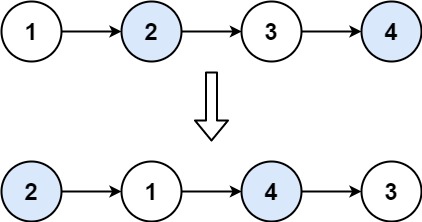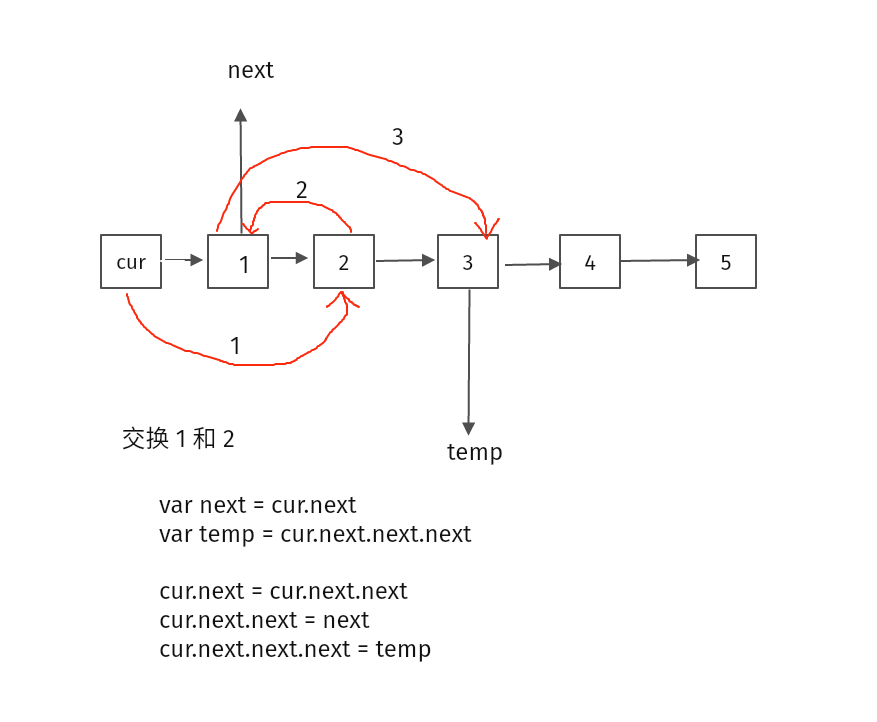Main idea
Use a dummy node and iterate the linkedlist.
Code
class Solution:
def swapPairs(self, head: Optional[ListNode]) -> Optional[ListNode]:
if not head or not head.next:
return head
dummy = ListNode(-1)
pre = dummy
first = head
second = head.next
while first and second:
temp = second.next
pre.next = second
second.next = first
first.next = temp
pre = first
first = first.next
second = temp.next if temp else None
return dummy.nextComplexity
Time complexity: O(n) Space complexity:O(1)



24. 两两交换链表中的节点
入选理由
暂无
题目地址
https://leetcode-cn.com/problems/swap-nodes-in-pairs/
前置知识
题目描述
你不能只是单纯的改变节点内部的值,而是需要实际的进行节点交换。
示例 1:
输入:head = [1,2,3,4] 输出:[2,1,4,3] 示例 2:
输入:head = [] 输出:[] 示例 3:
输入:head = [1] 输出:[1]
提示:
链表中节点的数目在范围 [0, 100] 内 0 <= Node.val <= 100